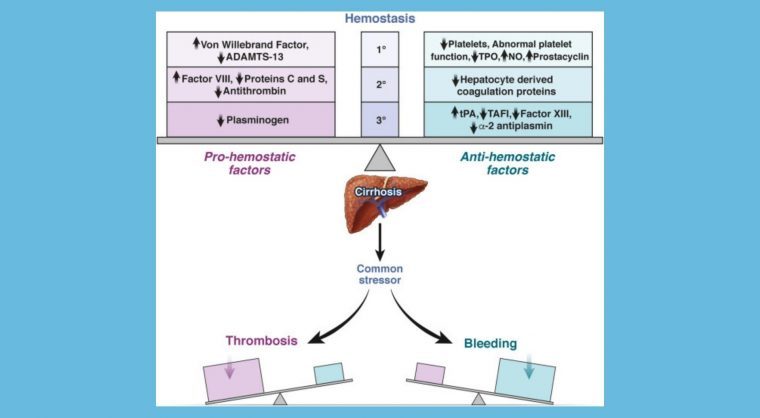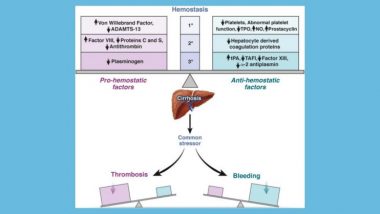AGA has released new clinical guidelines to change how you identify and treat coagulation disorders in patients with cirrhosis. In this new guidance, AGA recommends against the use of extensive preprocedural testing to estimate clotting in patients with cirrhosis. These guidelines, which were developed after a detailed review of available literature, are published in Gastroenterology, AGA’s official journal.
Key guideline recommendations
- Extensive preprocedural testing, including measurements of prothrombin time/international normalized ratio (PT/INR) or platelet count, should not routinely be performed in patients with stable cirrhosis undergoing common GI procedures.
- Blood products, including fresh frozen plasma (FFP) or platelet transfusion, should not routinely be used for bleeding prophylaxis in patients with stable cirrhosis undergoing common GI procedures.
- Standard pharmacologic venous thromboembolism (VTE) prophylaxis should be given to hospitalized patients with cirrhosis like other medical patients.
- Anticoagulation should be used to treat acute or subacute nontumoral portal vein thrombosis (PVT) in patients with cirrhosis to improve patient outcomes.
“Patients with cirrhosis typically have abnormal markers of coagulation, which in the past were interpreted as indicating a higher risk of bleeding,” says lead author Dr. Robert S. O’Shea of the Cleveland Clinic Main Campus in Cleveland, Ohio. “However, this has not been borne out in clinical practice, and accumulating evidence suggests that the use of these tests is inappropriate. Despite this, because of the concerns related to these tests of blood clotting, the care of these patients has been compromised – requiring frequent and often unnecessary testing or transfusion prior to undergoing routine procedures important in their treatment. This has essentially exposed them to risk with no benefit.”
Read the AGA Clinical Practice Guidelines on the Management of Coagulation Disorders in Patients with Cirrhosis to review the complete recommendations.
The authors will be available in the AGA Community the week of Nov. 28 to answer any questions you have about applying these guidelines in practice. Follow the AGA Community Roundtable to receive updates.













